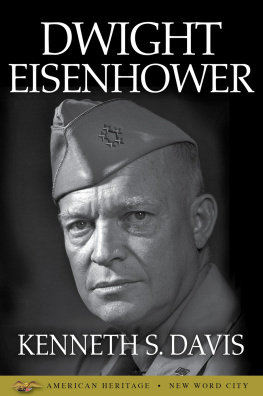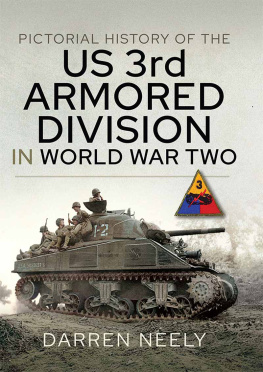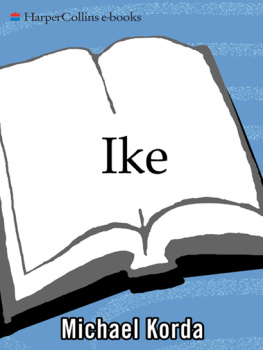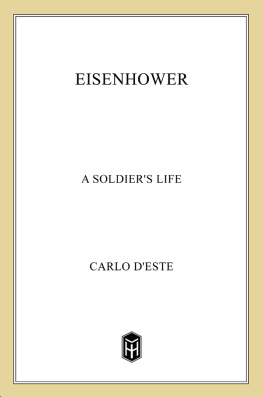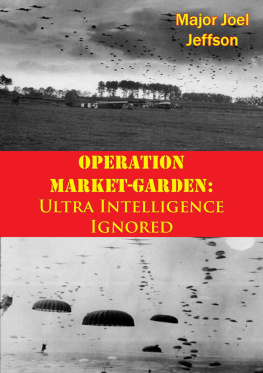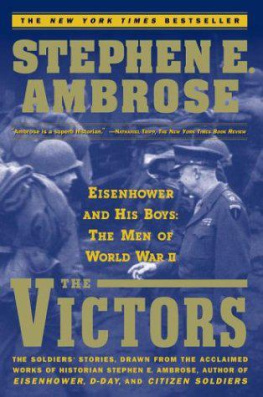Pagebreaks of the print version

THE FOLLY OF GENERALS
THE FOLLY OF GENERALS
How Eisenhowers Broad Front Strategy Lengthened World War II
DAVID P. COLLEY
Published in the United States of America and Great Britain in 2021 by
CASEMATE PUBLISHERS
The Old Music Hall, 106108 Cowley Road, Oxford OX4 1JE, UK
and
1950 Lawrence Road, Havertown, PA 19083, US
Copyright 2021 David Colley
Hardcover Edition: ISBN 978-1-61200-974-2
Digital Edition: ISBN 978-1-61200-975-9
Kindle Edition: ISBN 978-1-61200-975-9
A CIP record for this book is available from the British Library
All rights reserved. No part of this book may be reproduced or transmitted in any form or by any means, electronic or mechanical including photocopying, recording or by any information storage and retrieval system, without permission from the publisher in writing.
For a complete list of Casemate titles, please contact:
CASEMATE PUBLISHERS (US)
Telephone (610) 853-9131
Fax (610) 853-9146
Email:
www.casematepublishers.com
CASEMATE PUBLISHERS (UK)
Telephone (01865) 241249
Email:
www.casematepublishers.co.uk
Front cover images:
(top) The Allied commanders after meeting about the Ardennes strategy, December 7, 1944. (Wikimedia Commons)
(bottom) The U.S. 39th Infantry Brigade crossing the Dragons Teeth of the Siegfried Line. (U.S. Army)
As always, thanks to my wife, Mary Liz, my sons,
Padraic and Christopher, and loyal Pips
Introduction
Many of the histories of World War II in the European Theater of Operations, the ETO, are focused on the exploits of two generals, the American, George S. Patton Jr., and British Field Marshal Bernard Law Montgomery. Patton commanded the U.S. 3rd Army; Montgomery commanded the 21st Army Group. Only they, it is often implied, could carry out swift and devastating thrusts in September 1944 to breach the German Siegfried Line defenses that protected the border, cross the fabled Rhine River, and advance deep into Germany to end the war in Europe. The Allied High Command was focused principally on the Ruhr industrial area in western Germany that was Montgomerys principal objective. Pattons primary objective was the Saar industrial zone near the French border. Both areas produced vast amounts of war materiel for the Wehrmacht, with the Ruhr producing as much as 50 percent of Germanys tanks, planes, guns and vehicles. The Allied High Command and General Dwight D. Eisenhower, the Supreme Commander in Europe, believed that if the Ruhr were lost to the German war machine, the enemy would soon collapse.
Pattons American 3rd Army, part of General Omar Bradleys 12th Army Group, romped through northern France in the late summer of 1944 before being halted in the French province of Lorraine by stiffening German defenses. Montgomerys 21st Army Group moved rapidly along the French Channel coast that same summer before advancing into Belgium and the Netherlands where German resistance stopped them. To break the German defenses Montgomery proposed and planned Operation Market Garden , an airborne attack on the bridge at Arnhem in the Netherlands that was designed to outflank German border defenses and open a path to the Ruhr. Patton believed he could blast his way through the German defenses and take the Saar. Both Patton and Montgomery were itching to be first.
Monty or Patton which one would end the war? This has become a major theme in histories of the war in the ETO and to a large extent it is cast in stone by historians and to some extent by Eisenhower, who had to juggle the persistent demands of either one to lead the Alies into Germany.
With a bias towards Montgomery and Patton, Eisenhower and the Allied High Command (SHAEF Supreme Headquarters Allied Expeditionary Force) neglected to exploit other opportunities where American armies and generals might have breached the German Siegfried Line defenses. There were at least four other chances for the Americans to crack the German defenses from the Netherlands to the Swiss frontier, seven or eight months before the war ended in May 1945.
Eisenhowers failure to exploit those opportunities is attributed by most histories to be largely due to a lack of supplies, mainly gasoline, and a lack of reserve forces to reinforce breakthroughs. But is this really true or is it an explanation that has been embraced and become doctrine over the decades?




